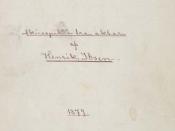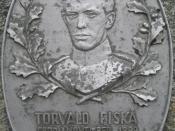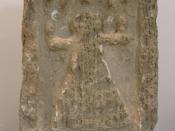A Doll's House
In the play A DOLL'S HOUSE a variety of social themes are discussed, evoking thoughts about how women were treated and giving us a glimpse into the workings of a repressed and desperate 19th century housewife's mind. Throughout the play Ibsen provides us with many subtle and sometimes blatant symbols and metaphors that exemplify the depth of Torvald's love for his wife Nora. Through these examples we can infer that Torvald's love is strong but directed in an erroneous way towards Nora.
The way in which Torvald communicates with his wife is a very obvious example of his wrongly exhibited love for her. Within the first three pages Torvald uses a variety of names for Nora. He calls her a "little skylark", "my squirrel", "little spendthrift", and "little featherhead." Torvald uses these terms in an endearing way and believes he is causing no ill feelings.
Nora see these terms as condescending and demeaning and resents being called a "spendthrift." She is embarrassed enough about being called Torvald's "squirrel" that she hides her macaroons whenever Torvald is around. The fact that Torvald is calling her his squirrel does not help Nora's feelings of resentment, as she feels that she does not want to be Torvald's property; she wants him to love her as the independent woman that she is.
Torvald's narcissistic traits and dedication to business affairs also contributes to the dilution of his love and thoughtfulness towards Nora. On page two Torvald says, "There can be no freedom or beauty about a home life that depends on borrowing and debt." This causes Nora to become disillusioned about her husband's love for her because in order for her to save her husbands life she had to borrow money to go to a warmer...


